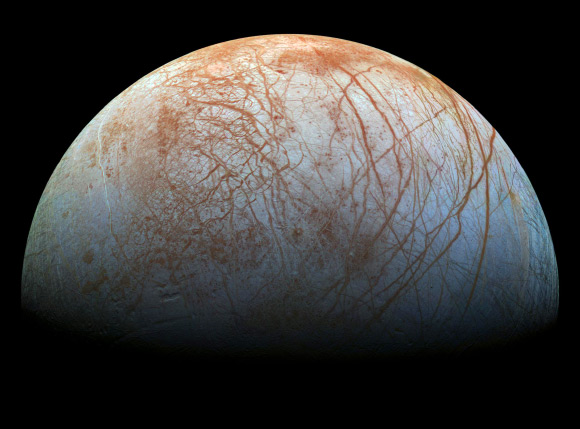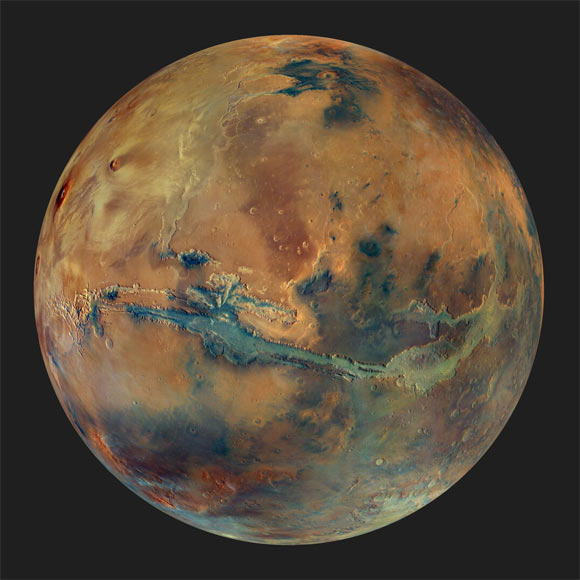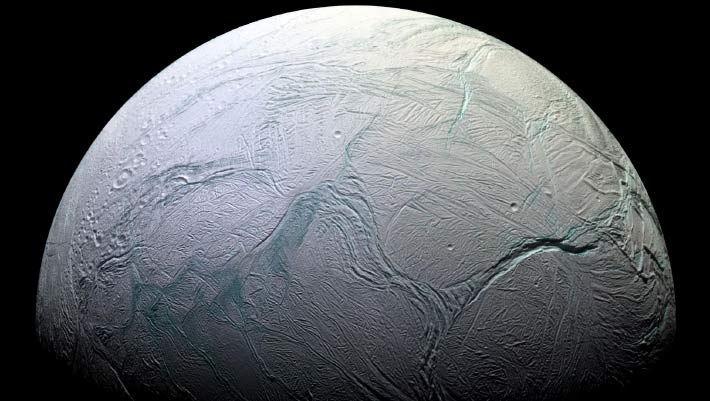Radiolysis induced by Galactic cosmic rays could provide a viable energy source for microbial metabolism in the subsurface environments of rocky planetary objects such as Mars, Europa and Enceladus, according to new research led by New York University Abu Dhabi.
NASA’s Cassini spacecraft captured this stunning mosaic of Enceladus on October 5, 2008 as the spacecraft sped away from this geologically active moon of Saturn. Image credit: NASA / JPL / Space Science Institute.
Ionizing radiation is known to have a destructive effect on biology by causing damage to DNA, cells and the production of reactive oxygen species, among other things.
While direct exposure to high-radiation dose is indeed not favorable for biological activity, ionizing radiation can and, in some cases, is known to produce a number of biologically useful products.
One such mechanism is the production of biologically useful products via charged particle-induced radiolysis.
“We focused on what happens when cosmic rays hit water or ice underground,” said Dr. Dimitra Atri from New York University Abu Dhabi and colleagues from the University of Washington, the University of Tennessee, Rice University, and the Universidad Industrial de Santander.
“The impact breaks water molecules apart and releases tiny particles called electrons.”
“Some bacteria on Earth can use these electrons for energy, similar to how plants use sunlight.”
“This process is called radiolysis, and it can power life even in dark, cold environments with no sunlight.”

The surface of Europa looms large in this newly-reprocessed color view; image scale is 1.6 km per pixel; north on Europa is at right. Image credit: NASA / JPL-Caltech / SETI Institute.
Using computer simulations, the researchers studied how much energy this process could produce on Mars and on the icy moons of Jupiter and Saturn.
These moons, which are covered in thick layers of ice, are believed to have water hidden below their surfaces.
The scientists found that Enceladus had the most potential to support life in this way, followed by Mars, and then by Europa.
“This discovery changes the way we think about where life might exist,” Dr. Atri said.
“Instead of looking only for warm planets with sunlight, we can now consider places that are cold and dark, as long as they have some water beneath the surface and are exposed to cosmic rays.”
“Life might be able to survive in more places than we ever imagined.”

This image from Mars Express’ High Resolution Stereo Camera shows the globe of Mars set against a dark background. The disk of the planet features yellow, orange, blue and green patches, all with an overall muted grey hue, representing the varying composition of the surface. Image credit: ESA / DLR / FU Berlin / G. Michael / CC BY-SA 3.0 IGO.
In their study, the authors also introduce a new idea called the radiolytic habitable zone.
Unlike the traditional ‘Goldilocks zone’ — the area around a star where a planet could have liquid water on its surface — this new zone focuses on places where water exists underground and can be energized by cosmic radiation.
Since cosmic rays are found throughout space, this could mean there are many more places in the Universe where life could exist.
“The findings provide new guidance for future space missions,” the reserachers said.
“Instead of only looking for signs of life on the surface, scientists might also explore underground environments on Mars and the icy moons, using tools that can detect chemical energy created by cosmic radiation.”
“This research opens up exciting new possibilities in the search for life beyond Earth and suggests that even the darkest, coldest places in the Solar System could have the right conditions for life to survive.”
The study appears in the International Journal of Astrobiology.
_____
Dimitra Atri et al. 2025. Estimating the potential of ionizing radiation-induced radiolysis for microbial metabolism on terrestrial planets and satellites with rarefied atmospheres. International Journal of Astrobiology 24: e9; doi: 10.1017/S1473550425100025
